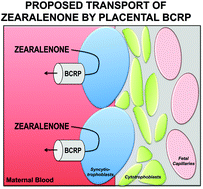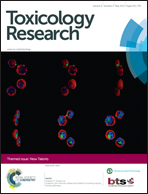In vitro screening of environmental chemicals identifies zearalenone as a novel substrate of the placental BCRP/ABCG2 transporter
Abstract
The BCRP (ABCG2) transporter is responsible for the efflux of chemicals from the placenta to the maternal circulation. Inhibition of BCRP activity could enhance exposure of offspring to environmental chemicals leading to altered reproductive, endocrine, and metabolic development. The purpose of this study was to characterize environmental chemicals as potential substrates and inhibitors of the human placental BCRP transporter. The interaction of BCRP with a panel of environmental chemicals was assessed using the ATPase and inverted plasma membrane vesicle assays as well as a cell-based fluorescent substrate competition assay. Human HEK cells transfected with wild-type BCRP or the Q141K genetic variant, as well as BeWo placental cells that endogenously express BCRP were used to further test inhibitor and substrate interactions. To varying degrees, the eleven chemicals inhibited BCRP activity in activated ATPase membranes and inverted membrane vesicles. Further, genistein, zearalenone, and tributyltin increased the retention of the fluorescent BCRP substrate, Hoechst 33342, between 50–100% in BeWo cells. Additional experiments characterized the mycotoxin and environmental estrogen, zearalenone, as a novel substrate and inhibitor of BCRP in WT-BCRP and BeWo cells. Interestingly, the BCRP genetic variant Q141K exhibited reduced efflux of zearalenone compared to the wild-type protein. Taken together, screening assays and direct quantification experiments identified zearalenone as a novel human BCRP substrate. Additional in vivo studies are needed to directly determine whether placental BCRP prevents fetal exposure to zearalenone.

- This article is part of the themed collection: New Talents

 Please wait while we load your content...
Please wait while we load your content...